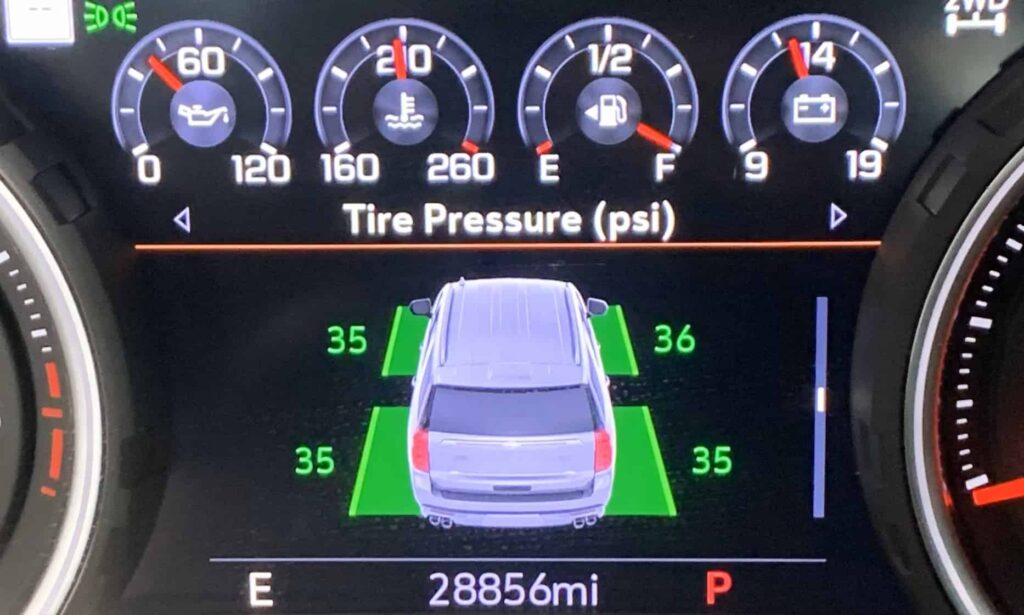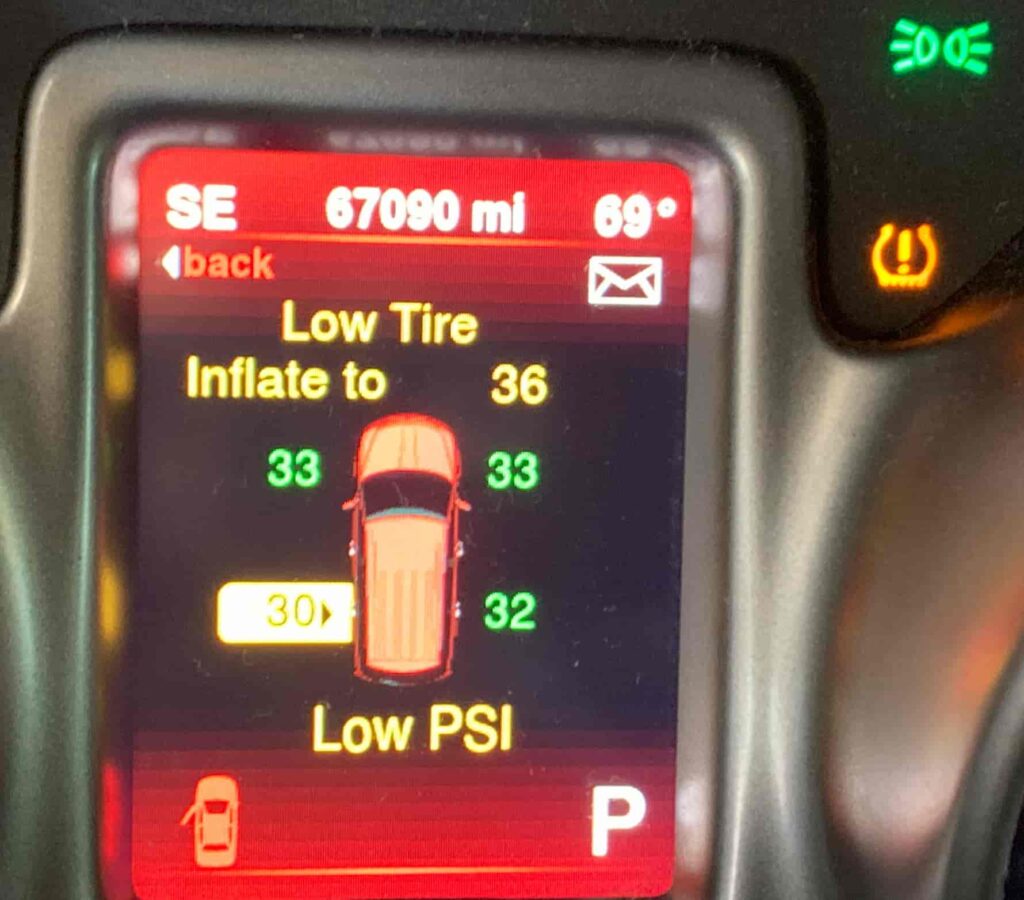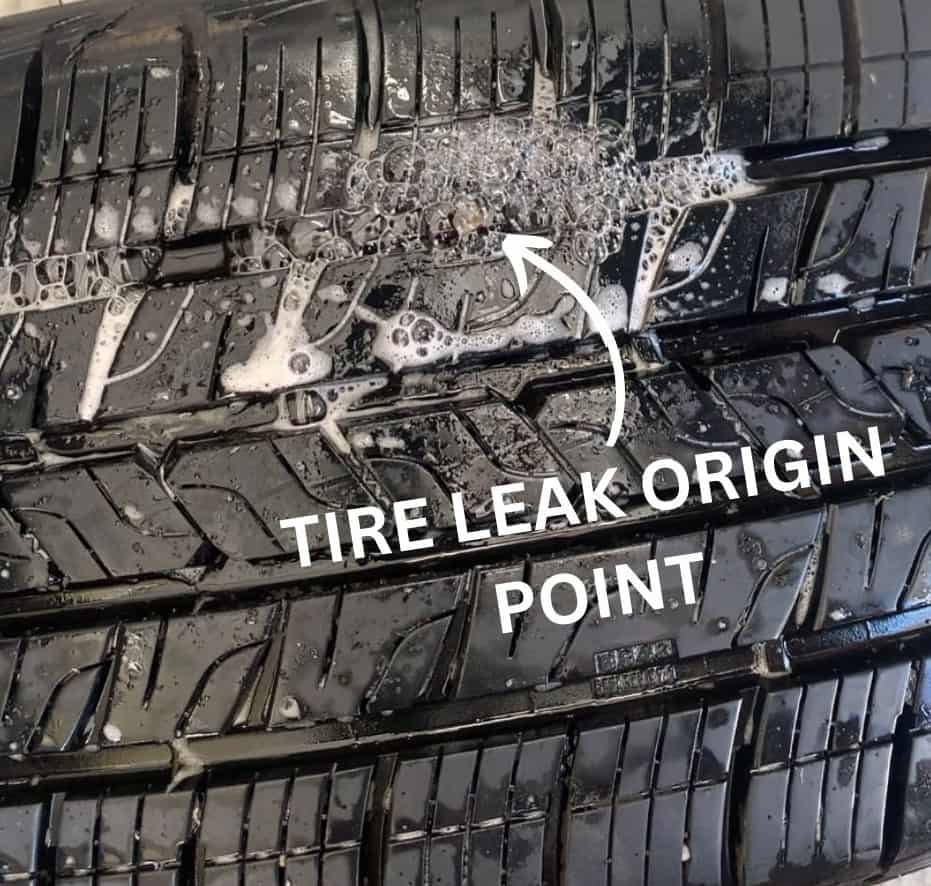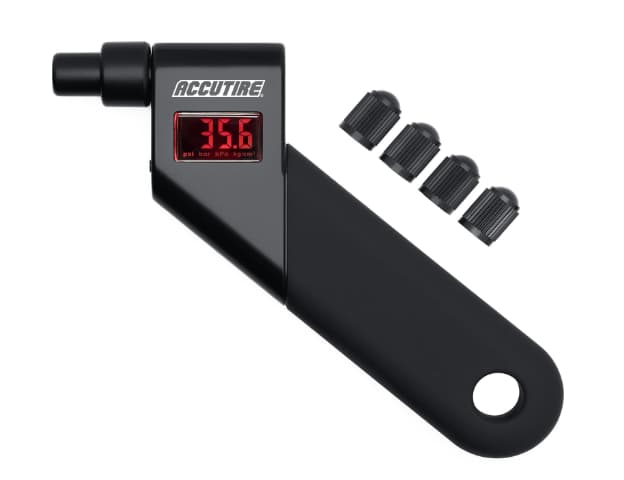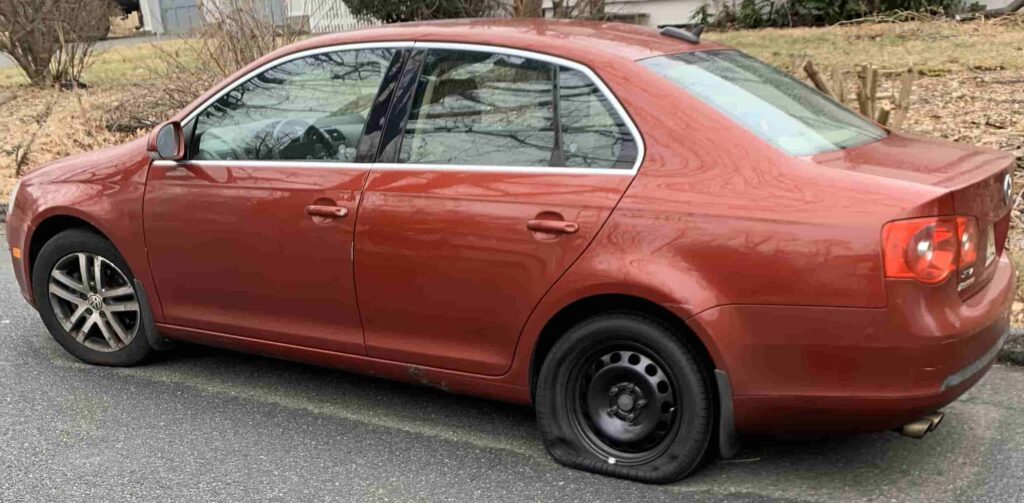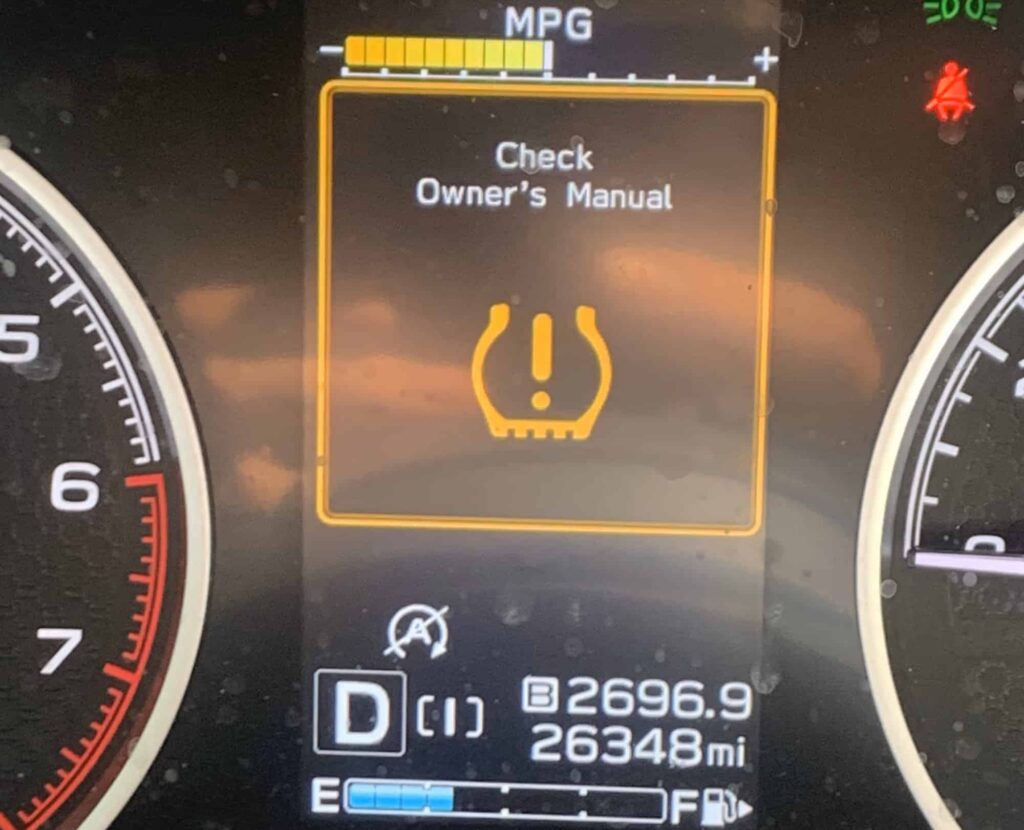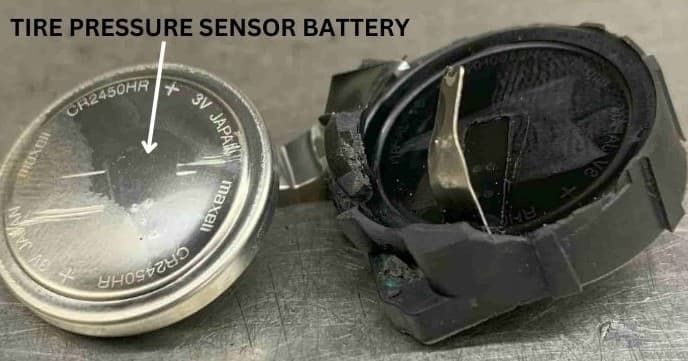Navigating a persistent low tire pressure light can be a daunting task for any driver. With our guide on 12 comprehensive solutions, from uncovering TPMS reset procedures to diagnosing potential tire leaks and understanding the impact of weather and altitude on tire pressure, we equip you with practical knowledge to troubleshoot and keep your journey smooth and safe.
The following are 12 tips and solutions to help diagnose and turn off your low tire pressure light:
TIP 1: FIND YOUR VEHICLES TPMS RESET PROCEDURE
Every make and model of every car, van, or truck has a specific tire pressure monitoring system reset procedure. Some vehicles like Honda or Toyota have specific buttons that reset the tire pressure system and some vehicles such as Dodge just need to be driven to reset the tire pressure system. Search our website for your specific car make and model or research your vehicles manual.
TIP 2: DO YOU HAVE A TIRE LEAKING AIR?
A simple way to determine if a tire leak is causing the low tire pressure warning is to follow your vehicle’s TPMS reset procedure. If the tire light turns off and then turns back on after, this is a clear indicator that the tire pressure system is working properly and that a tire is losing air. If the tire pressure light does not turn off after following the TPMS reset procedure (and all of the tires are at the correct pressure levels), this could potentially mean that a tire pressure sensor is not working correctly.
TIP 3: FIND THE LOCATION OF YOUR TIRE LEAK USING SOAPY WATER
If you have determined which tire is low on air pressure and you believe it is leaking air, follow this process to locate the exact source of the leak.
ITEMS REQUIRED: Air compressor/tire pump, spray bottle, water, soap.
Fill the tire with 30-35 Psi.
Create a soapy solution by combining water and soap. (detergent or liquid soap works well. Windex also works well)
Spray the tire until it is soaked. Be sure to spray the tire completely including the valve stem and bead of the tire.
Inspect the tire for air bubbles.
Once you have found the air bubbles, trace them back to the source of the puncture.
If the puncture is on the tread of the tire, it is repairable by plug or patch. If the leak is on the bead of the tire and wheel, the tire must be removed and the wheel bead sealed. If the leak is on the valve stem, the valve stem must be replaced.
TIP 4: DIAGNOSE A FAULTY OR LOW BATTERY TIRE PRESSURE SENSOR USING A TPMS PROGRAMMING TOOL
If the low tire pressure alert is triggered yet all of the tires are at the correct pressure values, it’s likely that a tire pressure sensor has a low or depleted battery. To test each tire pressure sensor battery, you will require a TPMS programming tool or a OBD2 diagnostic tool. The TPMS programming allows you to test and assess each tire pressure sensor individually. The OBD2 scan tool provides only diagnostic error codes about which wheel is causing the error. After following the TPMS programming tool instructions, the tool will provide an analysis report on each tire pressure sensor. If the tool reports low battery, cannot sync/communicate with the tool, or reports a bizarre reading such as tire temperature at -99 degrees, that tire pressure sensor must be replaced with a new one.
TIP 5: REBOOT YOUR VEHICLES ON BOARD COMPUTER
Your vehicles on-board computer stores each instance of a low tire pressure light in its memory as a diagnostic trouble code (DTC). Similar to rebooting your computer when not working properly, you can reboot your vehicle’s computer. To do so, follow these steps:
Shut off the engine and all electronics such as lights and radio.
Loosen and disconnect the negative battery terminal from the vehicle’s main 12 Volt battery.
Wait a moment and then reconnect and tighten the negative terminal back on the 12 Volt battery.
Drive the vehicle for approximately 30 minutes at a constant speed of 50 Mph.
If the low tire pressure light turns off and then reappears as you drive, the vehicle either has a tire pressure sensor with a low battery or a tire is low or losing air pressure.
TIP 6: FORCE A "JUMP-START" OF A STUBBORN TIRE PRESSURE SENSOR
Tire pressure sensors can be fickle. Occasionally, a tire is not low on air and the sensor battery is in good health yet the low tire pressure light remains on. This means that the tire pressure sensor has become inactive. To reactivate a problematic TPMS sensor, attempt the following:
Deflate the problematic tire by 20 Psi.
Inflate the tire to the recommended cold pressure plus an additional 5 Psi. (if the tire requires 30 Psi, fill it to 35 Psi)
Drive the vehicle for 10 minutes.
Adjust the pressure back to the recommended air pressure.
Drive the vehicle again for 10-15 minutes.
This process works well prior to following a vehicle’s TPMS reset procedure.
TIP 7: IS THE WEATHER TRIGGERING THE LOW TIRE PRESSURE LIGHT?
Tire pressure is intricately linked to ambient temperatures, with a general rule indicating that for every 10°F change in air temperature, tire pressure will adjust by approximately 1-2 psi. For instance, if a car is parked overnight in 80°F weather and the temperature drops to 50°F by morning, the tires could see a pressure drop of 3-6 psi. In warmer months, when the air temperature increases, the tire pressure will also increase by the same standard. This fluctuation is due to the fact that air molecules contract when cooled and expand when heated, causing variations in the tire’s internal air pressure. Temperature changes are enough to cause the low pressure light to trigger.
TIP 8: IS THE ALTITUDE CHANGE CHANGE TRIGGERING THE LOW TIRE PRESSURE LIGHT?
Tire pressure is influenced by altitude variations. As altitude increases, the external atmospheric pressure decreases. When ascending in a vehicle, there’s a decrease in external atmospheric pressure. This causes the internal air pressure of the tire to increase. To put it in numbers, for every increase of 1,000 feet in altitude, the tire pressure can increase by approximately 0.5 psi due to the lower external atmospheric pressure. So, if you were to drive from sea level to 9,000 feet, you could potentially see an increase of about 4.5 psi in your tires. Therefore, when traveling to higher altitudes, it’s essential to monitor tire pressure to avoid potential overinflation. Although overinflation is not optimal, it will not set off the low tire pressure alert.
TIP 9: DOES THE TIRE LIGHT TURN ON AND OFF BY ITSELF?
Tire pressure increases after tires have been driven on. This means that your low tire pressure light can potentially turn on and off by itself. This can happen due to a decrease in pressure due to a decrease in outside air temperature and then increase from being driven on. To prevent this from happening, set and adjust your tire pressures before they have been driven on, in a cold state.
TIP 10: IS THE TPMS RECEIVER MODULE OR ECM FAULTY?
Direct tire pressure monitoring systems are made up of 3 main components; tire pressure sensors, a TPMS receiver module, and the main vehicle computer or ECM. The TPMS receiver module and ECM are essentially small computers that can potentially be faulty. This is a very rare situation and is usually not the culprit of a low tire pressure light.
TIP 11: IS THERE A SOFTWARE UPDATE REQUIRED?
If your vehicle manufacturer puts out a software update for your specific vehicle make and model, without it, this can potentially cause a low tire pressure light. Always follow your vehicle manufacturer recommendations.
TIP 12: WHY IS THE LOW TIRE ALERT FLASHING?
If the low tire pressure light (yellow exclamation point on dashboard) is flashing, this indicates a TPMS Malfunction. A TPMS malfunction occurs when one or more tire pressure sensors are not properly communicating with the vehicles on board computer systems (ECU/ECM). This commonly occurs for two main reasons:
Driving with the spare tire or donut on the car – Most spare tires do not have tire pressure sensors within them so when the vehicle’s computer system attempts to communicate with the spare tire, there is not a sensor to communicate with.
Low or depleted tire pressure sensor battery – All tire pressure sensors are powered by small non-rechargeable batteries. Once a battery has depleted enough, it stops being able to communicate with the vehicle’s TPMS receiver module and ECM.
Please note that this blog post contains Amazon affiliate links. This means that if you make a purchase through one of these links, we at TPMSRESET.COM may earn a small commission at no extra cost to you. We only recommend products that we personally use and believe in. Thank you for supporting us.
